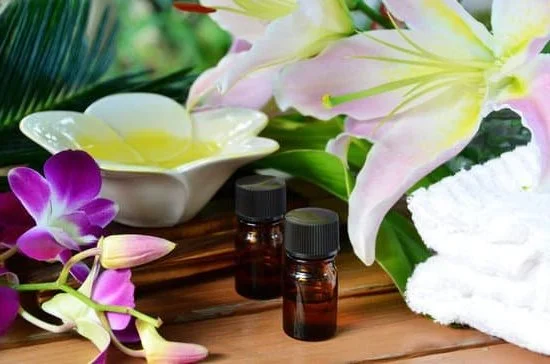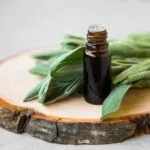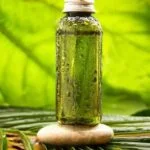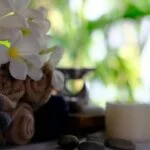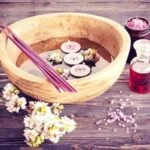Are you looking to learn how to use a diffuser for aromatherapy? Aromatherapy is a holistic healing treatment that uses natural plant extracts to promote health and well-being. Among the various methods of incorporating essential oils into your routine, using a diffuser is a popular and effective way to enjoy the benefits of aromatherapy.
Aromatherapy has been used for centuries as a form of alternative medicine and has gained popularity for its therapeutic effects, including stress relief, improved sleep, mood enhancement, and even pain management. The use of a diffuser allows for the dispersion of essential oils into the air, creating a soothing atmosphere that can positively impact both mental and physical health.
In this article, we will explore the different types of diffusers available, the steps to using them effectively for aromatherapy, safety precautions when using essential oils in a diffuser, and even maintenance tips. Additionally, we will discuss how to choose the right essential oils for your needs and explore various essential oil blends tailored towards relaxation, energy boost, and stress relief.
Whether you are new to aromatherapy or looking to enhance your existing knowledge, this guide will provide valuable insights on how to make the most out of your aromatherapy diffuser.
Understanding Different Types of Diffusers
When it comes to using a diffuser for aromatherapy, it is crucial to understand the different types of diffusers available in the market. The three main types of diffusers are ultrasonic, nebulizing, and evaporative diffusers. Each type has its own set of features, benefits, and best uses depending on individual preferences and needs.
Ultrasonic diffusers work by creating ultrasonic vibrations that break down essential oils into microparticles, dispersing them as a fine mist into the air. These diffusers also act as humidifiers, adding moisture to the air which can be especially beneficial during dry weather or in air-conditioned rooms.
Nebulizing diffusers do not require water or heat to disperse essential oils. Instead, they use an atomizer to create a fine mist of pure essential oil particles that are released into the air. This type of diffusion provides a more concentrated aroma and therapeutic benefits as the oils are not diluted with water.
Evaporative diffusers typically involve a pad or wick that is used to absorb the essential oils. The oils then evaporate from the pad and are released into the surrounding air. While these diffusers are simple and easy to use, they may not provide as strong or long-lasting aroma compared to ultrasonic or nebulizing diffusers.
| Types of Diffusers | Description |
|---|---|
| Ultrasonic | Create ultrasonic vibrations to disperse essential oils as a mist into the air. |
| Nebulizing | Use an atomizer to create a concentrated mist of pure essential oil particles without water or heat. |
| Evaporative | Involve pads or wicks to evaporate essential oils into the surrounding air. |
Understanding these different types of diffusers is important in order to choose one that best suits your specific aromatherapy needs. Whether you prefer a subtle and continuous scent (ultrasonic), a concentrated therapeutic aroma (nebulizing), or a simple and hassle-free diffusion method (evaporative), there is a diffuser out there that can enhance your overall well-being through aromatherapy.
Choosing the Right Essential Oils for Aromatherapy
When it comes to aromatherapy, essential oils play a crucial role in promoting relaxation, boosting energy, and relieving stress. Choosing the right essential oils for aromatherapy depends on your desired outcome and personal preferences. Here are some popular essential oils and their benefits:
- Lavender: Known for its calming and soothing properties, lavender essential oil is perfect for promoting relaxation and improving sleep quality.
- Peppermint: With its invigorating scent, peppermint essential oil is great for boosting energy and improving focus and mental clarity.
- Lemon: If you’re looking for a refreshing and uplifting aroma, lemon essential oil can help elevate your mood and reduce feelings of stress and anxiety.
- Tea Tree: With its antimicrobial properties, tea tree essential oil is commonly used for its cleansing and purifying effects, making it ideal for creating a clean and fresh environment.
Once you’ve chosen the essential oils that align with your needs, it’s important to understand how to use a diffuser for aromatherapy effectively. Different types of diffusers work best with specific essential oils, so it’s important to pair them accordingly.
Here Are Some Tips on How to Use a Diffuser for Aromatherapy
- If you’re using an ultrasonic diffuser, be mindful of the amount of water used when adding essential oils to prevent overpowering the scent. Start with a few drops initially, then adjust as needed based on your preference.
- Nebulizing diffusers require undiluted essential oils for maximum potency. This type of diffuser is suitable for smaller spaces due to its strong concentration of the aroma.
- Evaporative diffusers are best paired with lighter, easily evaporated essential oils such as citrus or floral scents. These diffusers work by allowing air flow to carry the aroma throughout the room.
By understanding the properties of different essential oils and knowing how to use a diffuser for aromatherapy properly, you can create personalized blends that cater to your specific wellness needs.
Step-by-Step Guide on How to Use a Diffuser for Aromatherapy
A diffuser is a device that disperses essential oils into the air, allowing you to enjoy the therapeutic benefits of aromatherapy. Using a diffuser for aromatherapy is a simple and effective way to promote relaxation, improve mood, and create a pleasant ambiance in your home or workspace. In this section, we will provide a step-by-step guide on how to use a diffuser for aromatherapy, so you can experience the many benefits of essential oils.
The first step in using a diffuser for aromatherapy is to choose the right type of diffuser for your needs. There are several different types of diffusers available, including ultrasonic, nebulizing, and evaporative diffusers. Each type has its own unique method of dispersing essential oils into the air, so it’s important to select the one that best suits your preferences and lifestyle.
Once you have chosen a diffuser, the next step is to select the appropriate essential oils for your aromatherapy session. Different essential oils offer various therapeutic benefits, such as relaxation, stress relief, energy enhancement, or mood upliftment. It’s essential to use high-quality, pure essential oils to ensure maximum effectiveness and safety when using them in a diffuser.
After selecting your preferred essential oil or oil blend, simply follow these steps to use a diffuser for aromatherapy:
- Fill the water tank of your diffuser with clean tap water.
- Add 5-10 drops of your chosen essential oil or oil blend into the water.
- Place the cover back on the water tank and turn on the diffuser according to the manufacturer’s instructions.
- Enjoy the aromatic mist as it fills your space with delightful scents and therapeutic properties.
Using a diffuser for aromatherapy can be an enjoyable and beneficial experience when done correctly. By following these simple steps and taking proper precautions, you can create a soothing and revitalizing atmosphere in your home or workplace using essential oils and a quality diffuser.
| Diffuser Type | Description |
|---|---|
| Ultrasonic | This type uses ultrasonic vibrations to disperse essential oils into the air as a fine mist. |
| Nebulizing | Nebulizing diffusers break down essential oils into tiny particles without using heat or water. |
| Evaporative | Evaporative diffusers use a fan to blow air through an absorbent pad that holds essential oils. |
Safety Precautions and Tips for Using Essential Oils in a Diffuser
When using a diffuser for aromatherapy, it is important to take certain safety precautions and consider some tips to ensure a pleasant and safe experience. Essential oils are highly concentrated and potent, so it’s crucial to handle them with care and be mindful of how they are used in a diffuser. Here are some important safety precautions and tips to keep in mind when using essential oils in a diffuser:
1. Dilution: Before adding essential oils to the diffuser, it is recommended to dilute them with a carrier oil such as jojoba, almond, or coconut oil. This helps reduce the risk of skin irritation or allergic reactions when the scent is dispersed into the air.
2. Ventilation: It’s essential to ensure that the room where the diffuser is being used is well-ventilated. This helps prevent the build-up of strong aromas, which can sometimes be overwhelming or irritating to sensitive individuals. Opening windows or doors can help circulate the air and create a more comfortable environment.
3. Pet Safety: Some essential oils can be harmful to pets, so it’s important to research which oils are safe for use around animals before using a diffuser. Certain scents may cause adverse reactions in pets, so always consider their well-being when using aromatherapy diffusers in your home.
4. Quality of Essential Oils: Using high-quality, pure essential oils is key to achieving the desired therapeutic benefits while reducing potential risks. Be sure to purchase oils from reputable sources and avoid synthetic or adulterated products that may contain harmful additives.
By following these safety precautions and tips, you can enjoy the benefits of aromatherapy without any adverse effects on your health or well-being. Always remember to use essential oils responsibly and consult with a healthcare professional if you have any concerns about their use in a diffuser for aromatherapy.
The Best Essential Oil Blends for Relaxation, Energy, and Stress Relief
When it comes to using a diffuser for aromatherapy, one of the most exciting aspects is creating your own essential oil blends. These blends can be tailored to suit your specific needs, whether you are looking to relax, boost your energy, or find relief from stress. By combining different essential oils, you can create powerful aromatherapy blends that cater to your individual preferences and requirements.
Relaxation Blend
For those seeking relaxation, a popular essential oil blend includes lavender and chamomile. Lavender is known for its soothing and calming properties, while chamomile has similar effects and can promote a sense of tranquility. By combining these two oils in your diffuser, you can create a peaceful and serene atmosphere ideal for unwinding after a long day.
Energy Blend
If you need an energy boost, consider blending peppermint and citrus oils such as lemon or orange. Peppermint is invigorating and can help increase alertness, while citrus oils have uplifting and rejuvenating qualities. Diffusing this blend can provide a revitalizing effect, making it perfect for mornings or midday slumps.
Stress Relief Blend
To alleviate stress and tension, combine ylang-ylang and bergamot essential oils. Ylang-ylang is known for its calming and mood-enhancing properties, while bergamot has anxiety-reducing effects. This blend can help create an environment conducive to relaxation and stress relief.
By experimenting with different essential oil combinations based on their therapeutic properties, you can find the best blends that work for you. Whether you are seeking to unwind at the end of the day, increase your energy levels, or find relief from stress, using a diffuser for aromatherapy with custom essential oil blends can be incredibly beneficial.
Maintenance and Cleaning of Aromatherapy Diffusers
After using your aromatherapy diffuser for some time, it is essential to regularly clean and maintain it to ensure that it continues to work effectively and efficiently. Proper maintenance and cleaning also help prevent the buildup of essential oil residue, which can affect the performance of the diffuser and the quality of the aroma it produces.
To maintain your aromatherapy diffuser, start by unplugging it from the power source and emptying any remaining water and essential oil mixture. Use a soft cloth or cotton swab to gently wipe out any residue from the inside of the water tank. For stubborn residue, you can mix equal parts white vinegar and water and use this solution to clean the tank. Be sure to rinse thoroughly with clean water afterwards.
Additionally, cleaning the ultrasonic plate (for ultrasonic diffusers), air tube (for nebulizing diffusers), or wick (for evaporative diffusers) is important for optimal performance. Refer to the manufacturer’s instructions on how to safely clean these components. It is recommended to perform these maintenance steps every 1-2 weeks, depending on how frequently you use your aromatherapy diffuser.
Regular maintenance not only extends the life of your aromatherapy diffuser but also ensures that you continue to enjoy the full benefits of using essential oils for aromatherapy. By keeping your diffuser clean and well-maintained, you can experience consistent diffusion of pleasant scents throughout your home or workspace. Understanding how to use a diffuser for aromatherapy goes beyond just adding essential oils – proper maintenance is key in maximizing its effectiveness.
Exploring Different Ways to Use Aromatherapy Diffusers in Daily Life
Aromatherapy diffusers can be incorporated into your daily routine in a variety of ways, allowing you to experience the benefits of essential oils throughout the day. Whether you want to promote relaxation, boost energy, or relieve stress, there are several methods for using a diffuser in your daily life.
Morning Pick-Me-Up
Start your day off on the right foot by using your diffuser to create an energizing blend of essential oils. Citrus scents like lemon or orange can help to wake up your senses and provide a natural burst of energy. Consider blending these with peppermint or rosemary for an invigorating aroma that helps to kickstart your morning routine.
Workspace Enhancement
If you have a home office or spend long hours at a desk, consider using a diffuser to improve the atmosphere of your workspace. Essential oils such as lavender and eucalyptus can promote focus and mental clarity, while also creating a calming environment that may reduce feelings of stress or overwhelm during busy workdays.
Evening Relaxation
In the evening, wind down from the day by incorporating aromatherapy into your evening routine. Opt for calming scents such as chamomile, ylang-ylang, or cedarwood to create a peaceful atmosphere in your home. Diffusing these essential oils can help signal to your body that it’s time to relax and unwind before bedtime.
By incorporating aromatherapy diffusers into different aspects of your daily life, you can take advantage of the many benefits that essential oils have to offer. Experiment with different blends and scents to discover how aromatherapy can enhance various moments throughout your day.
Conclusion
In conclusion, aromatherapy and the use of diffusers have been shown to have a transformative power on overall well-being and mood. The benefits of using a diffuser for aromatherapy are numerous, including promoting relaxation, boosting energy, and providing stress relief. By understanding the different types of diffusers and choosing the right essential oils, individuals can customize their aromatherapy experience to suit their specific needs and preferences.
This article has provided a comprehensive guide on how to use a diffuser for aromatherapy, from selecting the right type of diffuser to safety precautions and tips for using essential oils. By following the step-by-step guide outlined in this article, individuals can easily incorporate aromatherapy into their daily routines and experience its positive effects.
It is important to note that regular maintenance and cleaning of aromatherapy diffusers is essential for ensuring their longevity and effectiveness. Additionally, exploring different ways to use aromatherapy diffusers in daily life can further maximize the benefits of this holistic practice. Overall, incorporating aromatherapy and diffuser usage into one’s wellness routine can have a profound impact on both physical and mental health.

Are you looking for a natural way to improve your health and wellbeing?
If so, aromatherapy may be the answer for you.

